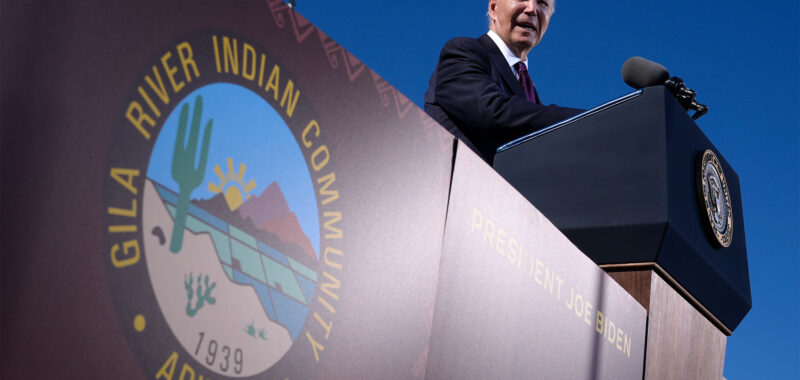Philip Deloria and Joseph P. Gone had family members who were taken from their homes and placed in government- or church-run boarding schools as part of a decadeslong federal initiative aimed at forcibly assimilating thousands of Native children.
Late last month, President Biden made a historic apology to Native Americans on behalf of the U.S. government. “I know no apology can or will make up for what was lost during the darkness of the federal boarding school policy,” Biden said during a visit to the Gila River Indian Community in Arizona. “But today, we’re finally moving forward into the light.”
The gesture was applauded by many in the community, and for good reason, said Deloria, the Leverett Saltonstall Professor of History.
“Apologies have not exactly been forthcoming from the federal and state governments and the churches, and the various entities that have enacted some of these programs on any people over the years. Any time that there’s recognition of those histories, I think it’s really important,” he said. “For many Native people, the moments where the rituals of formal American diplomacy are actually visible is also recognition of Native nationhood and of Native continuities and futurities.”
“A lot of people will be grateful for this apology, irrespective of the motivators for it, and are grateful that he appointed Secretary [Debra] Haaland, because it wouldn’t have happened without her,” added Gone, anthropology professor and faculty director of the Harvard University Native American Program. Gone credited Haaland, the first Native American to serve as U.S. secretary of the interior, for making the “boarding school wound” a priority during Biden’s administration.
Boarding schools, which often kept children away from their families for long periods of time, forced American Indian, Alaska Native, and Native Hawaiian students to speak English and prohibited them from speaking their own languages. These children were also banned from learning or practicing their own religions.
“The parts that are worth emphasizing are just the sheer brutality of many of these schools,” Deloria said. The children were subjected to physical and emotional abuse and sometimes served as free labor. Native students in both U.S. and Canadian boarding schools caught illnesses that killed many of them, he pointed out.
Federal boarding schools continued well into the 20th century. A July investigative report by Haaland’s department revealed that 19,000 Native children were forced into these boarding schools, with nearly 1,000 dying while there.
At the age of 5, Gone’s great-grandfather Many-Plumes was taken to a federally run industrial school in Fort Belknap Agency in Montana, where his name was changed to Frederick Peter Gone. There, the young boy was kept away from family and abused, he said.
“It colored his life and the life of our descendants ever since in part because of these experiences,” Gone noted.
Similar boarding or industrial schools were also run by Christian, Mormon, and Catholic churches. Deloria’s grandfather and great-aunts went to church boarding schools that were just “a little better” than other federal or religious-run institutions.
“There’s an entire theory of historical trauma, which is largely based around the kinds of ways in which boarding-school trauma suffered by these children is passed down to subsequent generations,” he said.
In 1928, the “Meriam Report: The Problem of Indian Administration” highlighted the ineffectiveness of the boarding-school policy. Following reforms, some of the federally run schools transformed into places where Native students could interact with members of different tribes, Gone said.
“In the ’60s and ’70s, going to these schools sometimes could be more interesting than being in your tiny, little rural school on the reservation where you already know everybody,” Gone said. “One of the unintended consequences is you had a lot of intermarriage among Indian people who met at boarding schools.”
Despite reforms, the impact of boarding schools is felt to this day. In addition to calling on the federal government to apologize, Haaland’s report recommended creating a national memorial commemorating of Native children who died in the schools, and an investment in Native communities and their languages.
The Biden administration signed legislation that invested more than $45 billion in Native communities through the American Rescue Plan, the Bipartisan Infrastructure Law, and the Inflation Reduction Act.
Deloria and Gone suggested some of the funds should be invested in healthcare, particularly in a way in which tribal nations can retain their sovereignty and autonomy. “There’s no domain of Indian life that wouldn’t benefit from additional resources,” Gone said.
Biden’s apology came just days before the recent presidential election, but the two professors said the timing was unimportant to them. “It may be that this is like a capstone for Biden, and it may be a cynical gesture in relation to the election, but it may also be the beginning of something new that goes forward,” Deloria said.
Source link

